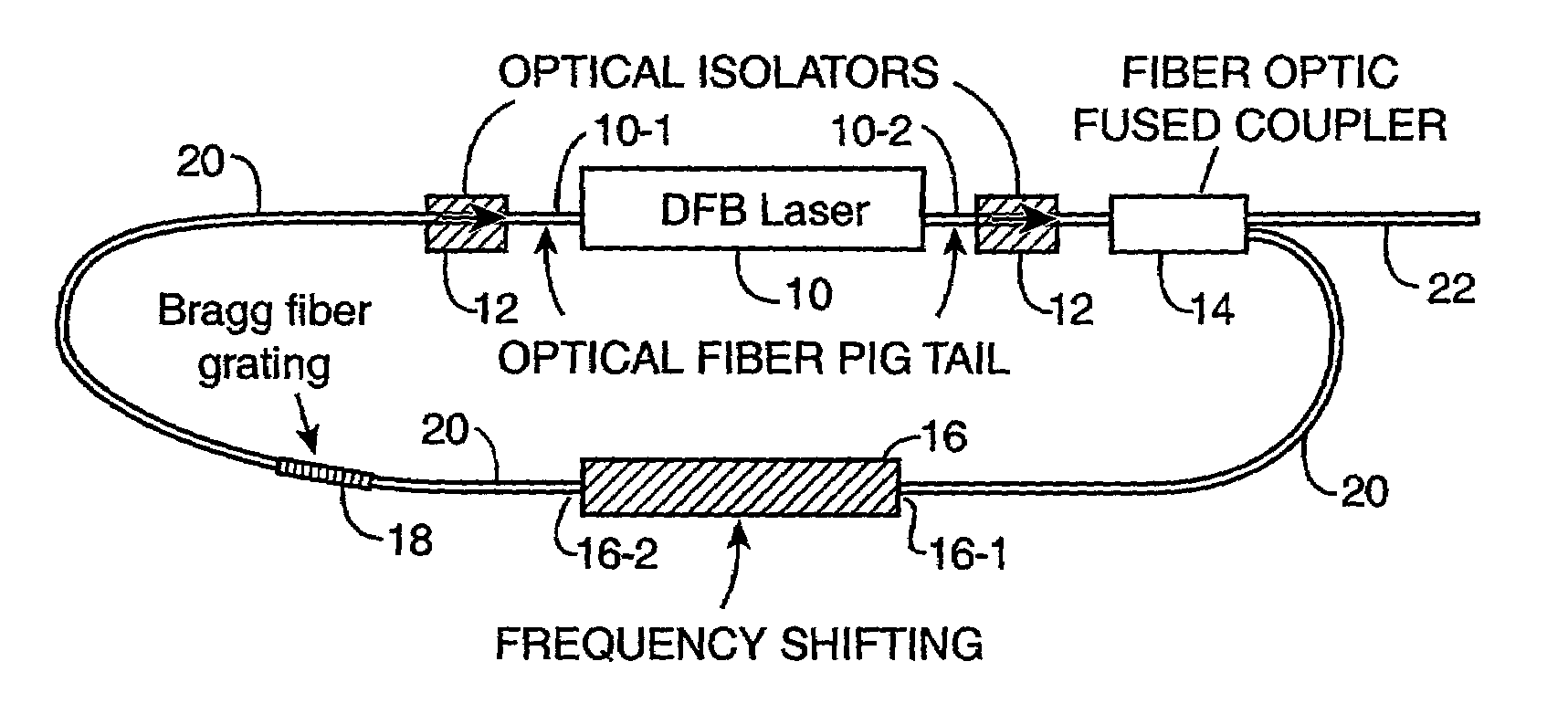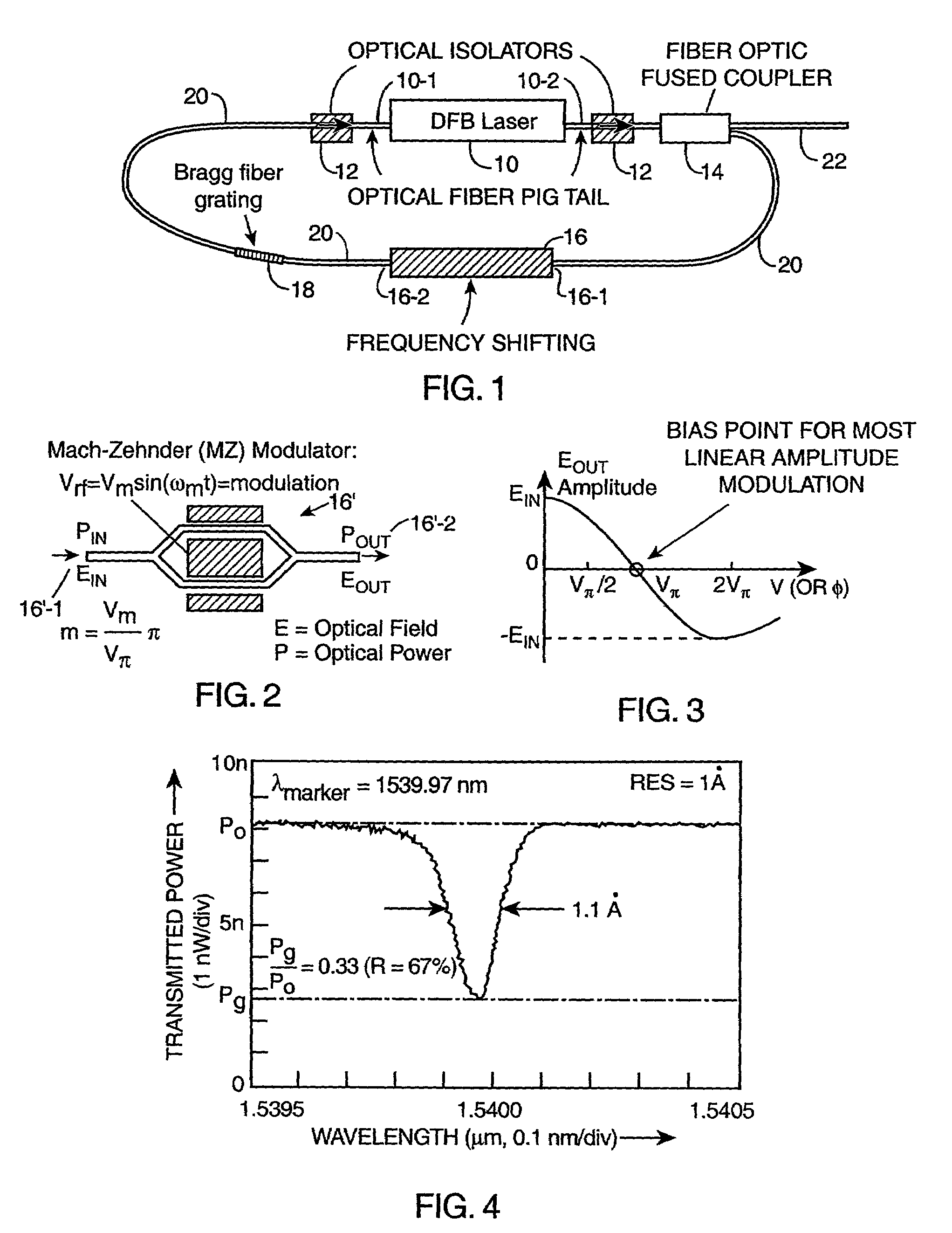Bandwidth enhanced self-injection locked DFB laser with narrow linewidth
- Summary
- Abstract
- Description
- Claims
- Application Information
AI Technical Summary
Benefits of technology
Problems solved by technology
Method used
Image
Examples
Embodiment Construction
[0015]In accordance with the present invention, a self-injection system such as that shown in FIG. 1 is used to eliminate the need of using a bulky and expensive external laser. A distributed feedback (DFB) semiconductor laser is depicted by reference numeral 10. Other types of lasers than a DFB laser may be alternatively used provided that the laser is a single wavelength laser. For example, a DBR laser may be used in place of DFB laser 10. DFB lasers are preferred since they are readily available in the marketplace. A DFB laser typically has pigtails which can be conveniently used to connect it via optical isolators 12 to a fiber optical fused coupler 14 at the laser's output 10-2 and to a filter 18 at the laser's input 10-1. The optical isolators 12 are preferably used to eliminate undesirable reflective laser output from feeding back into the cavity of laser 10. Fiber optic cables 20 are preferably used to connect up these devices as shown in FIG. 1; however, those skilled in th...
PUM
 Login to View More
Login to View More Abstract
Description
Claims
Application Information
 Login to View More
Login to View More - R&D
- Intellectual Property
- Life Sciences
- Materials
- Tech Scout
- Unparalleled Data Quality
- Higher Quality Content
- 60% Fewer Hallucinations
Browse by: Latest US Patents, China's latest patents, Technical Efficacy Thesaurus, Application Domain, Technology Topic, Popular Technical Reports.
© 2025 PatSnap. All rights reserved.Legal|Privacy policy|Modern Slavery Act Transparency Statement|Sitemap|About US| Contact US: help@patsnap.com



